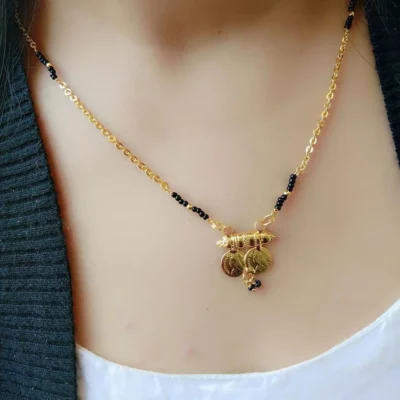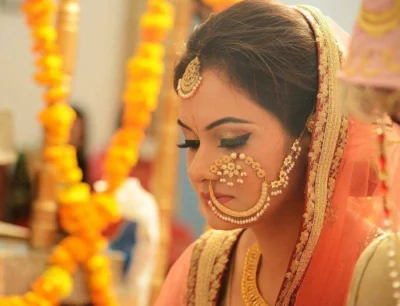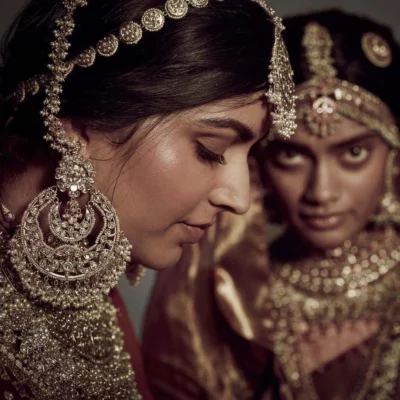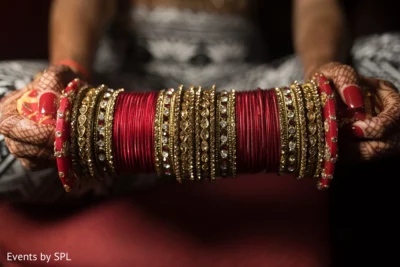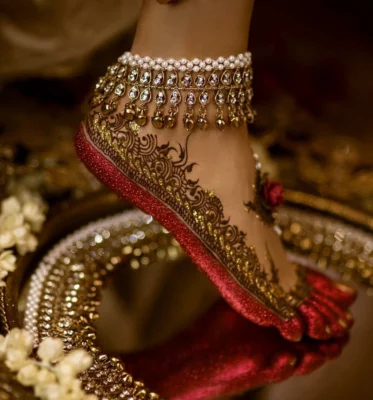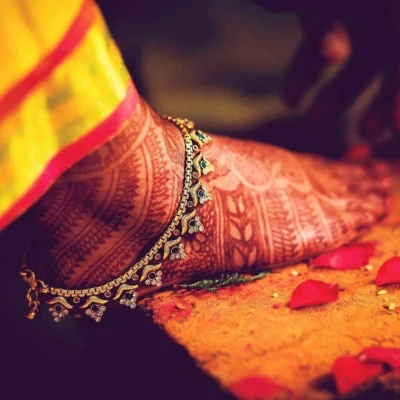Are you a bride to be who is not aware of jewellery essentials? Don’t worry we got your back, in this article, we’ll explore the essential jewelry pieces that complete the bridal ensemble, adding a touch of ornate elegance to the bride’s wedding attire. Indian weddings are all about the grandeur and celebrations. In the tapestry of Indian weddings, jewellery holds a special place, symbolizing tradition, opulence, and the celebration of union. For the Indian bride, choosing the right jewellery is not just about accessorizing; it’s about embracing cultural heritage and making a statement on her special day.
1. Mangalsutra: The Sacred Symbol of Matrimony
When we talk about jewellery essentials, how can we forget about the mangalsutra? The famous dialogue from Suryavanshi – (Mangalsutra zaroor gale mein pehna jaata hai; magar iska rishta saanson se juda hota hai), perfectly describes the value of mangalsutra in Indian weddings. The mangalsutra is more than a piece of jewellery; it’s a sacred thread that binds the bride to her groom. Traditionally made of black and gold beads, modern mangalsutras come in various designs to suit different tastes. Whether it’s a traditional long strand or a contemporary pendant style, the mangalsutra remains a quintessential piece that symbolizes the eternal bond of marriage.
2. Maang Tikka
The maang tikka is a forehead ornament that adds a regal touch to the bride’s look. Positioned along the hairline, it is often adorned with intricate designs, pearls, or gemstones. The maang tikka draws attention to the bride’s face, highlighting her features with grace. From traditional jhoomar-style tikka to contemporary asymmetric designs, this piece enhances the bridal aura with elegance. It is worn across the center parted hair or hung on the forehead. The main significance of wearing a Maang Tikka is that sits on the part of the head which houses the Agya Chakra, which signifies the preservation
3. Nath
The nath, or nose ring, is a timeless jewellery piece that holds cultural significance. Whether a simple stud or an elaborate hoop, the nath adds a touch of allure to the bride’s face and simply elevates her look. Some brides also opt for a nathani, a chain connecting the nose ring to the earring or hair, creating a striking and traditional look. Nose piercing is a common concept in India, as nose piercing is considered lucky for a married woman, but don’t stress if your nose is not pierced there are clip-on nose rings for your help. The nath is not just an accessory; it is a symbol of a bride’s new beginning.
4. Earrings: Dazzling Ornaments for Graceful Ears
Earrings are a crucial element of the bridal ensemble, framing the face with elegance. When it comes to earrings there are several options available such as Jhumkas, chandbalis, or elaborate chandelier earrings, the choice is yours. The earrings often complement the design of the maang tikka and necklace, creating a harmonious overall look. Brides can choose between traditional gold pieces, diamond-studded earrings, or those embellished with coloured gemstones to suit their personal style.
5. Necklace: The Centerpiece of Bridal Adornment
What bridal ensemble is complete with a bejewelled necklace, the bridal necklace, known as the haar or haar set, is a centrepiece that commands attention. Whether it’s a classic rani haar, a multi-layered necklace, or a choker, the necklace completes the bridal ensemble. Traditionally, these necklaces were crafted in gold, however with the change in time now, there are many designs that you can go for like diamonds, pearls or even coloured gems and rubies. Elaborate designs with intricate craftsmanship, often featuring Kundan, Polki, or precious gemstones, make the necklace a statement piece that accentuates the bride’s neck.
6. Bangles and Bracelets
Ask any Indian auntie and she’ll tell you that no traditional Indian outfit is complete without bangles. Bangles are so important that you will find all the newlywed brides wearing “Chooda”. Bangles and bracelets are symbolic of a bride’s marital status and prosperity. Whether traditional gold bangles, choodas, or intricately crafted kadas, these accessories add grace to the bride’s movements. Some brides also opt for personalized bracelets with their wedding date or initials, blending tradition with a contemporary touch.
7. Haath Phool: Adorned Hands
The haath phool, or hand harness, is a unique and intricate accessory that embellishes the bride’s hands. Consisting of rings connected by chains to bracelets, the haath phool adds a touch of royalty to the bride’s overall look. This piece is often adorned with gemstones, pearls, or Kundan, complementing the bridal jewellery ensemble.
8. Waist Belt (Kamarbandh): Defining Elegance at the Waist
The kamarbandh, or waist belt, is a traditional accessory that accentuates the bride’s waist. We don’t see a lot of brides wearing a waistband nowadays but it used to be a symbol of sensuality in the olden times. Whether it’s a simple gold chain or a more elaborate design with gemstones and intricate patterns, the kamarbandh adds a regal touch to the bridal attire. This accessory is not only ornamental but also holds cultural significance, symbolizing the bride’s marital status and prosperity.
9. Toe Rings (Bichhiya): Grounded in Tradition
Toe rings, also known as bichhiya, are worn on the second toe of both feet and hold cultural importance in many Indian communities. Traditionally made of silver, gold, or even adorned with gemstones, toe rings symbolize the marital status of the bride. Brides often choose intricate designs that complement their overall bridal look.
10. Anklets (Payal)
Anklets, or payals, are adorned around the ankles and contribute to the rhythmic elegance of the bride’s movements. Whether it’s a classic pair with tiny bells or a more elaborate design, anklets complete the bridal ensemble with a touch of melodic grace. Some brides opt for personalized anklets, engraved with their initials or wedding date.
Conclusion:
For the Indian bride, jewellery is not just an accessory; it’s a reflection of cultural heritage, marital status, and personal style. Each piece holds significance, weaving a story of tradition and elegance. As brides embark on the journey to their special day, these essential jewellery pieces serve as a guide, helping them curate a bridal look that resonates with timeless grace.






